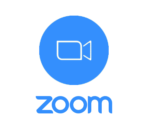Better Zoom Meetings
 My partners and I hold weekly Monday meetings and about once a quarter, we do an extended, six or seven-hour version. Before COVID-19, we’d end the day with a dinner and a chance to socialize and decompress after a long day of portfolio updates and strategic planning. And, of course, before COVID we’d all be in person. Our discussions were lively, they were engaged and we’d often make use of whiteboards, sticky notes and other forms of interaction (we have a post card with a logo for each of our portfolio companies which we often make creative use of). They’re fun and super productive.
My partners and I hold weekly Monday meetings and about once a quarter, we do an extended, six or seven-hour version. Before COVID-19, we’d end the day with a dinner and a chance to socialize and decompress after a long day of portfolio updates and strategic planning. And, of course, before COVID we’d all be in person. Our discussions were lively, they were engaged and we’d often make use of whiteboards, sticky notes and other forms of interaction (we have a post card with a logo for each of our portfolio companies which we often make creative use of). They’re fun and super productive.
And then COVID hit and our meetings lost their soul (and their fun, and their interest, and – to be frank – some of their effectiveness). I wrote about my frustration of trying to hold “strategic” meetings (vs tactical ones) over Zoom a few weeks ago. Since then I’ve gotten a bunch of helpful feedback and I’ve spent time researching ideas for how to make these sorts of meetings more effective and productive. Here are a few of the things that I learned (and that we implemented at Foundry in our most recent “extended Monday” meeting this week). I’d love to hear other ideas and will update this post accordingly.
- Prework. We often have some amount of pre-work for meetings but its even more important, I think, to prepare ahead of time for Zoom meetings. It’s also an opportunity to use the meeting for more conversational topics rather than reporting (see below), which can drag on in a Zoom. A brief exercise ahead of the meeting gets people thinking about the agenda and ready to jump in when the meeting starts.
- The agenda order matters a lot. In thinking through the ordering of the agenda, put deep discussion items first. Unlike in person meetings where it’s sometimes helpful to ease into the meeting with some lighter topics, Zoom meetings are most engaged when people are fresh. Best to have the meatier items up front and save the end of the day for more informational topics. We also used the pre-work for this – pre-meeting exercises that resulted in update-style content being created (and then consumed) ahead of time so we didn’t have to spend Zoom time doing it.
- A quick green/yellow/red check-in can be very helpful. I like starting most of my meetings this way – a quick stoplight check-in so everyone knows what frame of mind everyone else is in. It’s even more important over Zoom where some of the subtle cues of a person’s emotional state are easily missed. I have some meetings where people just put this in their Zoom name so everyone can see it in the chat (i.e., this doesn’t have to take up a ton of time). I also like starting longer meetings with a few deep breaths (10 works) so everyone can get in the present and clear their heads before jumping in.
- Timed breaks versus topic breaks; frequent breaks. This is an important one. Zoom fatigue is real. Other than keeping meetings relatively short (hard for strategic meetings) one of the best things you can do to stay fresh is to take relatively frequent breaks. I like every hour to 90 minutes for longer meetings. And, importantly, these should be time based, not topic based. Have the discipline to stop mid-topic to take breaks as scheduled, rather than trying to power through them with a break as the “carrot” at the end (leads to rushed, incomplete discussions.
- In-meeting engagement. Find ways for people to stay focused and engaged. Some kind of feedback task can be really helpful for this. For our last meeting, we went old-school with sticky notes to replace the usual whiteboard, and asking people to share feedback after each session. Zoom is starting to roll out some in-meeting collaborative apps. Tools like Miro, Lucidchart, and Stormboard are things I’m looking at.
- Use grid view; stay off mute. Looking at and listening to one person for an extended time gets dull quickly. Allowing everyone to see and talk to each other at the same time help mimics an in-person meeting better and allows everyone to stay engaged. Having everyone stay off mute encourages engagement and keeps people off email.
- Second screen for shared docs. The screen share feature on Zoom is fine, but it makes it harder to see everyone who is on the call. If it’s possible, try to have people look at shared docs on a separate device. If you have to screen share, keep it short and pop back to the grid view/no share frequently.
We implemented all of these ideas at our last Foundry meeting and it was much, much better. More engagement, more fun and we got much more done. It also allowed us to limit the meeting time (although it was still 5 hours, which is definitely the outer limit for Zoom meetings). Still not the same as in person but better. We’ll keep trying to improve.

